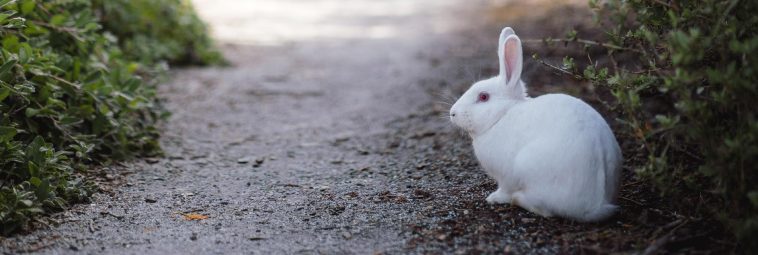The vital first step in rabbit breeding is choosing the right breed. Accor-ding to the American Rabbit Breeders Association, there are around 38 breeds and 89 variants of domestic rabbits. Some of the breeds are discussed in this article.
New Zealand White

The New Zealand White is a rabbit breed that originated in the United States of America. Albino rabbits are born as the offspring of coloured rabbits. From the beginning, it was bred selectively in large meat-production units, particularly in southern California (the San Diego area), for its breeding qualities, which included prolificacy, maternal performance, rapid growth rate, and precocious body development.
The mature weight of the New Zealand White (5 kg) is a little more than that of the Californian. During the earliest experiments on the rabbit conducted at the Fontana Station in California, the New Zealand White was employed as a model. Since 1960, this breed has expanded throughout Western Europe and other parts of the world, owing to the increasing usage of mesh flooring in rabbit cages since that time. Depending on the feeding regimen, it is possible to achieve a slaughter weight of 3 kg live weight in 12 to 14 weeks.
Californian White

The Californian is a false American breed. It was introduced to the public for the first time in California in 1928 by its breeder, who hoped to produce a meat animal with exceptionally soft fur. The Californian may grow to between 3,6 and 4 kg as an adult. It has a high proportion of meat dressing. It is shorter and stockier in stature, and it is white except for its ears, nose, paws, and tail, which are either dark grey or black. It is an excellent sire breed for interbreeding with other rabbit breeds for meat production.
Chinchilla

The large Chinchilla rabbit that is bred in Europe is descended from German stock. The typical mature weight of this species is 4,5 kg. It may be raised for either meat or fur.
French Lop

Although this breed is popular among Kenyan rabbit keepers because of its enormous ears that droop over its head, it is ideal for keeping as a pet. They have short and stocky legs, but are hefty, weighing over 5 kg.
Dutch

This rabbit breed is relatively tiny yet compact, with shorter forelegs. The lightweight breeds often mature extremely rapidly and are wonderful mothers, which is why they are popular. They use less food than medium and large breeds, and in developing countries, they might be crossed or utilised pure to create a light, meaty carcass weighing 1 to 1,2 kg.
Flemish Giant

The Flemish Giant from Belgium is available in a variety of colours. It is one of the largest rabbits (possible mature weight of 7 kg) and is still kept on a farm in its native country. Because of its high bone to flesh ratio and delayed development, this breed is not a great meat breed. Flemish Giants might be used to create a gene pool for enhancing growth in other breeds; in fact, they could be produced specifically for this reason. This breed is always brown in colour.
Angora

The Angora rabbit is primarily bred for its fleece/wool. They are usually considered pets and are not raised to produce meat. The production of this wool necessitates the employment of entirely different processes than those involved in the production of rabbits for meat. This specialisation has historically been achieved in France, where wool production has been the only focus for many years. However, several countries, notably China, are now building their own expertise in this field. In some cases, they do get slaughtered when they are very young, typically after the second or third clipping at the most. The nutritional requirements of Angora rabbits are critical: a poor, insufficient diet will always result in poor hair production, both qualitatively and quantitatively.
The information provided in this article is credited to:
The National Department of Agriculture in South Africa in cooperation with JA Erasmus at the Glen Agricultural Development Institute. For more information visit www. daff.gov.za or send an e-mail to DPP@nda.agric.za.
Nurturing the roots of change in rural Kenya in cooperation with Bonnie Ami Holt at the Mitahato Education and Development Fund. For more information visit www. mitahatoedf.com/ or contact them on +254-728-082887.
Dutta, P., Singh, R.K., Dhali, A. & Rajkhowa, C. (2009). BACKYARD RABBIT FARMING. 10.13140/ RG.2.1.1742.5440/1. Further discussions, stats, and author profiles for this publication at: www.researchgate.net/publication/273886912








